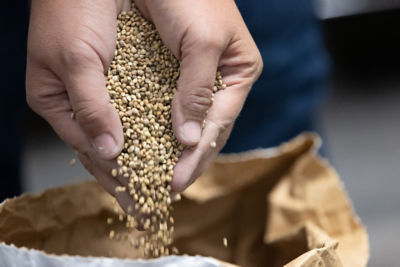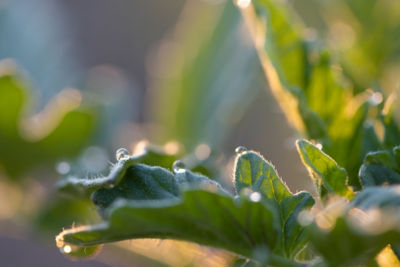Causal Agent
Beet pseudo-yellows virus (BPYV)
Vector
Greenhouse whitefly (Trialeurodes vaporariorum)
Distribution
Australia, France, Italy, Japan, The Netherlands, Spain and USA
Symptoms
Beet pseudo-yellows is an important disease on greenhouse cucumber and muskmelon (cantaloupe). This virus was previously known as cucumber yellows or muskmelon yellows. Symptoms first appear on older leaves as yellow spots which develop into yellow blotchy raised areas between veins, while the veins themselves remain green. These raised areas eventually coalesce to form large thickened areas, which become brittle and may disintegrate. As the disease progresses, younger leaves begin to develop symptoms, but fruit remain unaffected. Plants infected at an early stage can be stunted and may have fewer fruit. Symptoms caused by beet pseudo-yellows can easily be confused with symptoms resulting from nutritional deficiencies (e.g., magnesium), insect feeding, poor growing conditions and premature aging.
 Leaf symptoms include yellow raised areas between the veins with the veins remaining green.
Leaf symptoms include yellow raised areas between the veins with the veins remaining green.
Conditions for Development
The greenhouse whitefly can acquire and transmit Beet pseudo-yellows virus in a semi-persistent manner. Symptoms begin to develop two to four weeks after infection. The virus is not seed-borne or mechanically transmitted. High light intensity appears to be necessary for disease development. This virus has a large host range among crops and weed species. In addition to cucumber, muskmelon (cantaloupe) and squash, BPYV also infects many ornamentals and other vegetable crops such as lettuce, endive, carrot, spinach and beet.
Control
Prevent whiteflies from entering protected culture facilities by screening openings with insect-proof netting (minimum 50–52 mesh/297 micron screen). Implement a comprehensive insecticide program, crop rotation and a host-free period. Eliminate intercropping of young and old plants to reduce inoculum levels. Remove weeds and volunteer plants in and around greenhouses. Dispose of plant debris immediately after harvest to eliminate inoculum sources.



